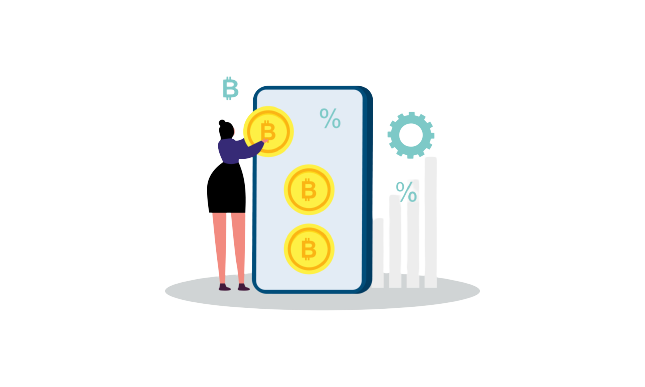
Bitcoin provides a fast, secure, and low-cost way to send and receive payments over the Internet. Underpinning Bitcoin is a decentralized peer-to-peer network that enables the transfer of value without third-party intermediaries.
When you want to send Bitcoin to someone, the transaction needs to be broadcast to the network so it can be verified and added to the blockchain. This guide will walk through the basic steps for sending Bitcoin directly from one wallet to another. We’ll also cover tips for choosing the right wallet and staying secure.
Select Your Bitcoin Wallet
The first step is choosing the right Bitcoin wallet to send funds from. Wallets come in many different forms with unique advantages and tradeoffs around factors like security, convenience, and control.
Some of the main Bitcoin wallet options include:
Hardware wallets – Most secure for larger holdings. Private keys stored offline protect against online threats. Branded wallets like Trezor and Ledger Nano provide easy backups and transaction signing.
Software wallets – Hot wallets connected to the internet. Easier to use with more features but increased cyber-attack risks. Options like Bitamp, Exodus, Jaxx, and Electrum are available across devices.
Mobile wallets – App-based hot wallets for convenience on the go. Lower security than hardware/software options but offers a user-friendly experience. Popular picks include BitPay, Edge, and Coinbase Wallet.
Paper wallets – Keys printed or handwritten on paper for cold storage. Not as convenient as other wallets but completely isolates keys from network access.
Exchange wallets – Built-in custodial wallets on exchanges like Coinbase and Binance. Convenient for trading but risks losing funds if an exchange is hacked. The best security is holding your private keys.
For repeatedly sending smaller amounts, mobile and software hot wallets offer a good balance of convenience and security. For long-term savings or infrequent large transfers, hardware wallets like Trezor provide top-tier security.
Fund Your Wallet With Bitcoin
Before being able to send Bitcoin from your wallet, you first need to have a Bitcoin balance. There are a few primary methods for getting Bitcoin into your wallet:

Purchasing on an exchange – Create an account on Coinbase, Gemini, or another exchange to buy coins which can then be withdrawn to your wallet.
Accepting as payment – Provide your Bitcoin wallet address to receive payments for goods/services. Use a QR code for convenience.
Mining Bitcoin – Using specialized hardware to validate transactions on the network and earn block rewards. Not practical for most individual users.
Earning Bitcoin – Complete tasks, freelance jobs, or provide liquidity on decentralized exchanges to be compensated in BTC.
Bitcoin faucets – Websites that distribute small amounts of Bitcoin for free as an introduction. Amounts are typically very low.
To accumulate any significant balance, your best Bitcoin wallet options are to either buy Bitcoin on an exchange or accept Bitcoin for selling goods/services. Both methods can quickly fund your wallet address with spendable coins.
Get The Recipient’s Wallet Address
To send Bitcoin to someone, you need their wallet address. This is a long string of letters and numbers starting with “1” or “3”. Some examples:
-1BvBMSEYstWetqTFn5Au4m4GFg7xJaNVN2
-3J98t1WpEZ73CNmQviecrnyiWrnqRhWNLy
-To share this address, the recipient can:
-Provide the address string directly
-Use a QR code representing the address
-Share a payment request link that encodes the address
-Have you scan their wallet app’s QR code
When possible, utilize QR codes which encode the address to avoid copying errors. Many wallets can generate a QR code of the current receiving address.
You can also request an address to send Bitcoin to from services like exchanges, merchants, casinos, and charities. Always verify you’re sending to a trusted, intended destination.
Initiate The Bitcoin Transaction
Once you have the recipient’s address, it’s time to create the Bitcoin transaction. The basic steps are:
-Open your Bitcoin wallet app or access your wallet online
-Navigate to the “Send” or “Transactions” screen
-Paste or scan the receiving address into the form
-Enter the amount of Bitcoin to send
-Confirm details and submit the transaction
Some additional tips:
-Double and triple check the address is correct before sending
-Start by sending a small test amount to verify you can receive
-Adjust the transaction fee higher for faster confirmation times
-Write a memo or note to identify the transaction
After submitting the transaction, you will see the Bitcoin debit from your wallet balance. The transfer is now broadcast to the Bitcoin network.
Wait For Network Confirmation
Once a Bitcoin transaction is sent, you must wait for network confirmation before the coins are spendable on the recipient side.
Confirmation occurs when Bitcoin miners add the transaction to a new block on the blockchain. The average confirmation time is 10 minutes but can vary depending on transaction fee and network conditions.
Each subsequent block that builds atop the one including your transaction provides an additional confirmation. For smaller amounts, 1 confirmation is usually acceptable for the receiving party to trust the transfer. But larger amounts suggest waiting for 5+ confirmations to be ultra-secure.
While waiting for confirmation, you can verify the transaction status using a Bitcoin block explorer. Input your transaction ID or wallet address to track its journey through the network.
Paying Bitcoin Fees For Faster Confirmation

Fees are collected by miners for processing transactions on the network. By attaching higher fees, your transaction gets priority for faster inclusion in the next block.
To adjust fees in your wallet, look for options like “transaction fee”, “gas price”, or “gas limit”. Also try toggling between “Economy”, “Regular”, or “Priority” fee levels.
Keep in mind:
-Fees are denominated in satoshis/byte (100 million satoshis = 1 BTC)
-A typical fee is 5-20 satoshis/byte for low-priority
-100+ satoshis/byte recommended for faster priority
-Wallets automatically include a fee amount but you can override
Setting higher fees reduces the time for your transaction to confirm while paying lower fees will lead to slower confirmation. Adjust accordingly based on your needs.
Maintain Proper Wallet Security
Once you’ve successfully sent Bitcoin, it’s critical to keep your wallet secure:
-Store private keys/recovery phrases safely offline
-Enable two-factor authentication if available in the wallet
-Keep software updated and avoid public WiFi for mobile wallets
-Use strong unique passwords and change them periodically
-Consider using a hardware wallet for large long-term holdings
Following basic security best practices ensures no one can access your wallet and spend funds without your authorization. Never share private keys or passwords publicly or online.
Back-Up The Wallet
Just as vital as security is backing up your Bitcoin wallet to guard against technical failures or device loss. Store backups separately from originals and test recovery periodically.
-For software wallets, safely backup wallet.dat files or recovery seeds
-With hardware wallets, keep the 24-word recovery phrase somewhere secure
-For mobile, ensure you can restore your wallet if the device is lost or damaged
-Consider employing multiple backup methods for redundancy
Protected Bitcoin backups allow you to recover your coins in case of any mishaps. Be diligent about creating and properly storing backups anytime you set up a new wallet.
Conclusion
Sending Bitcoin is as simple as choosing a wallet, getting the recipient’s address, entering the amount to send, and waiting for network confirmation. Approaching the process carefully and with attention to security allows even beginners to easily participate in transferring value over the Bitcoin network.
As the most widely adopted cryptocurrency globally, learning to send Bitcoin is a key skill for utilizing this innovative payment system. With digital currencies still in their infancy, being an early adopter helps you gain valuable experience as Bitcoin continues evolving into an accepted mainstream financial instrument and transactional network.